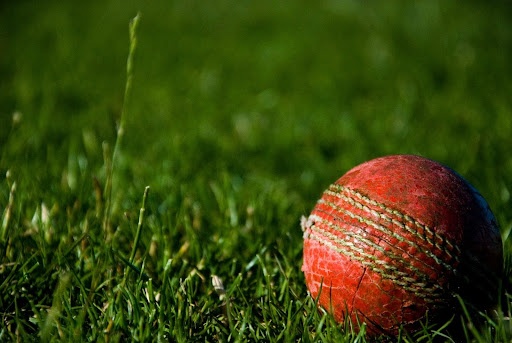
Every run counts in cricket, as well as a dropped catch. And a single decision, like choosing whether to bat or bowl first, can impact an entire series. All of these are important considerations. Now, more than ever, these considerations aren’t reliant on a hunch. Decisions are backed by data.
In the last decade, cricket has adapted to the power of big data. Now, even international teams and franchise leagues are dependent on algorithms, machine learning, and real-time statistics. Strategies are no longer instinct-driven, but rather analytical and calculated in nature. Everything is designed to outperform the competition, both in numbers and on the field.
The Rise of Data-Driven Match Preparation
How is data changing cricket and leading teams to transform numbers into victories? One way is through ensuring data-driven preparedness for every match.
Regardless of when a bowled ball is delivered on the field, analysts estimate every second of game footage, player performance metrics, and past trends. Analysts don’t stop at averages or aggregates, either. They analyze performance by multi specs such as pitch conditions, various match phases, and even dew weather conditions.
Take, for example, a case where a particular batsman may have an average of 50 in ODIs, but averages only 20 against left-arm spin on a slow pitch. That knowledge could encourage changing a batting position in the order, or perhaps make a specific call for a bowler to come in at a certain point. This is no longer some far-fetched idea, it’s commonplace at the elite levels.
These pieces of information do not simply sit on a laptop. Managers and team leaders incorporate them into strategies for the game, such as placing fielders where batters hit most, predicting bowler breakthroughs, or deciding which over their best spinner needs to come in.
Fans who follow online cricket betting often engage with these stats too, using them to understand matchups better, assess momentum shifts, or anticipate tactical moves mid-game. The same data that coaches use is now widely accessible, deepening how we experience the game.
Real-Time Analysis and In-Game Strategy
Don’t think modern cricket teams only do some analysis prior to the match – they do it live during the match as well! Support analysts who observe the game, either from the bench or via live feed, share their analysis with support personnel, broadcasting their insights.
Even the slightest changes can have advantageous consequences, such as a bowler losing their rhythm or a batsman not being able to connect with the ball while driving it. These hints on player performance can lead to strategical alterations such as field changes, bowling changes, or even sending messages through substitute fielders.
Some leagues, for example the IPL, have begun to integrate real-time analysis into their live broadcasts. Fans can now see predictive metrics like forecasted results, chances of winning, and “impact scores” which were previously only available behind closed doors.
Now, players are taking it a step further by using real-time data during tournaments. Wearable technology and GPS trackers provide self-evaluation regarding personal movement, overall health, and work completed. This not only reduces the occurrence of injuries, but also helps coaches determine a player’s readiness to perform during crucial moments.
The Secret Weapon: Bowling and Batting Matchups
Analyzing matchups, which focuses on the performance of specific batsmen against certain bowlers, is one of the most powerful and effective analytics strategies. Understanding how to utilize this information can make a pivotal change during times of high tension.
Imagine a batsman who has a history of struggling with high pace, but does well against an off-spin bowler. Data analysts would suggest starting with a fast bowler, even on a spinning pitch, just to exploit that weakness.
Also, when chasing a total, coaches will often tell the batters to go after certain bowlers during their weaker overs to optimize scoring. This is not guesswork; it’s cold, hard numbers.
Even captains like Eoin Morgan and Kane Williamson have praised data analytics for aiding them during times of pressure by limiting their choices to the most rational options, making them the best options.
Behind the scenes, pages like MelBet PK keep fans informed with these insights—sharing analysis, stats, and match discussions that reflect the analytical thinking now dominating professional cricket.
Beyond the Field: Scouting and Talent Development
Big data isn’t exclusively used on match days. It also helps in recruitment drives. By analyzing domestic league matches, training session videos, and even social media highlights, scouts can identify promising players who otherwise would go unnoticed.
Advanced metrics like “expected runs saved” and “control percentage” (for batters, the frequency of successful shot placements) are adding more value in comparison to traditional statistics. With their increasing availability, these metrics are influencing team selection deeply and transforming familiar processes.
Coaching aids development too. Coaches can specifically target particular gaps in skill set, such as a batsman’s particular short-pitched response weakness or a bowler’s death over line consistency, on the basis of unique profiles.
The Human Factor: Data Meets Intuition
Certain factors remain impossible to quantify. The thrill and excitement of a World Cup final, or the buzz of a home crowd, is something that can never be captured in numbers. This is why the best teams operate with a mix of instincts and data.
Data can support decision-making, but skilled players navigate the game relying on intuition. Analysts and coaches/pundits like Rahul Dravid and Ricky Ponting often discuss the balance between data and player psychology—when to follow the data and when to use instinct.
The beauty of the sport’s unpredictability rests on these human factors, and although cricket is shifting more towards technology, these qualities will always give it life.




